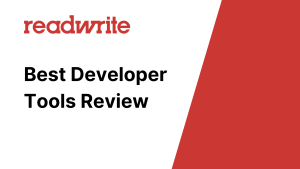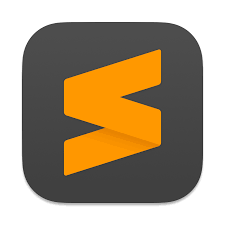As technology continues to advance at an unprecedented pace, software development has become more complex and demanding than ever before. In this dynamic landscape, developers rely on a wide array of tools and technologies to streamline their workflows, enhance productivity, and deliver high-quality software solutions. With the arrival of 2023, a new generation of developer tools has emerged, offering innovative features and capabilities that promise to shape the future of software development. In this article, we explore and showcase the best developer tools of 2023, carefully curated to provide developers with the means to overcome challenges, accelerate development cycles, and create exceptional digital experiences. From code editors and integrated development environments (IDEs) to testing frameworks and collaboration platforms, this comprehensive guide highlights the tools that are set to revolutionize the way software is developed and deployed in the coming years.
Review Process
The selections in this list of best developer tools of 2023 have been made based on their popularity, versatility, and the value they bring to software development processes. These tools have proven to be essential in empowering developers, optimizing efficiency, and improving the overall development experience. Each tool offers unique features and capabilities that address the diverse needs of developers across different domains and technologies.
The selection criteria also considered the level of innovation and advancements introduced by these tools in the year 2023. Many of the tools on the list have evolved significantly to adapt to the changing landscape of software development, incorporating cutting-edge technologies such as artificial intelligence, cloud computing, and containerization.
Furthermore, these tools have demonstrated their ability to enhance collaboration among development teams, enabling seamless communication, streamlined workflows, and efficient project management. They have also shown their effectiveness in improving code quality, automating repetitive tasks, and increasing productivity.
It is important to note that the selections in this list are subjective and may vary based on specific development requirements and preferences. However, they serve as a valuable resource for developers seeking to stay updated with the latest and most impactful tools available in 2023, empowering them to deliver high-quality software solutions and drive innovation in their respective fields.
Best Integrated Development Environments (IDEs)
Visual Studio Code

Rating: 5 out of 5
Visual Studio code developed by Microsoft, is an exceptional source code editor that has garnered widespread acclaim among developers worldwide. This lightweight yet powerful cross-platform tool supports an array of programming languages and provides outstanding features such as debugging, intelligent code completion, syntax highlighting, and integrated terminal. With its open-source nature, versatile extension ecosystem, and excellent version-control integration, Visual Studio Code establishes itself as an essential asset in a developer’s toolkit, catering to various project needs.
Features:
Visual Studio Code’s most impressive features will have you hooked! To begin with, the IntelliSense feature revolutionizes coding by providing smart completions based on function definitions, variable types, and module exports, minimizing errors while increasing productivity. The built-in Git support streamlines code versioning and collaboration with ease, while the versatile extensions marketplace ensures that you will find plugins tailored to your specific development needs. Furthermore, the customizable nature of Visual Studio Code allows users to tweak it according to their preferences, enhancing the entire coding experience. Exploring the fantastic world of Visual Studio Code is truly a joy, and its remarkable features undoubtedly elevate developers to new heights in their coding journey.
IntelliJ Idea
Rating: 4.5 out of 5.
IntelliJ IDEA is a versatile and powerful Integrated Development Environment (IDE) designed to enhance the productivity of software developers by providing them with an extensive set of advanced features addressing almost all aspects of software development. Developed and maintained by JetBrains, IntelliJ IDEA supports multiple programming languages, including Java, Kotlin, Groovy, and Scala, making it a preferred choice among developers for building robust and maintainable code. Its intelligent code completion, on-the-fly code analysis, effortless navigation between files and methods, efficient refactoring capabilities, and seamless integration with popular version control systems and build automation tools cater to a wide audience from individual developers to large teams.
Features:
Now let’s dive into some of the coolest features that set IntelliJ IDEA apart from the competition! One of the most impressive features this IDE has to offer is the smart auto-completion that predicts and suggests the code you’re likely to type next, making coding lightning-fast and more fun! Another game-changing feature is the flawless integration with top frameworks such as Spring, Hibernate, and Java EE, making it incredibly easy to create powerful and scalable web applications. Furthermore, IntelliJ IDEA has inbuilt support for popular version control systems like Git, Mercurial, and SVN, allowing seamless collaboration among team members to manage their code efficiently. With all these fantastic features, IntelliJ IDEA is undeniably the ultimate weapon in any developer’s arsenal!
PyCharm

Rating: 4.8/5.
PyCharm is an integrated development environment (IDE) specifically designed to bolster the efficiency and ease of Python programming. Developed by JetBrains, this robust and versatile platform seamlessly integrates with numerous Python frameworks such as Django, Flask, and Pyramid. Additionally, PyCharm supports web development technologies including HTML, CSS, and JavaScript, making it an indispensable tool for an extensive range of developers. With its automated code refactoring, syntax highlighting, and seamless version control integration, PyCharm exemplifies an intuitive and user-friendly environment, consistently delivering exemplary results.
Features:
The coolest features of PyCharm are simply astounding! Jetbrains has gone above and beyond by implementing intelligent code completion, which suggests the most appropriate code snippets based on user input. Moreover, the graphic debugger allows you to visualize your program execution flow in real-time, enabling quick identification and rectification of errors. The built-in terminal saves valuable time by providing command line access without ever leaving the IDE. With remote development capabilities and database tools, PyCharm makes it delightfully simple to collaborate with team members and manage database systems. It is no wonder that PyCharm remains an indispensable asset for Python programmers!
Eclipse
Rating: 4.5 out of 5.
Eclipse is a widely-used, open-source integrated development environment (IDE) that offers a vast array of features catering to software developers across various programming languages such as Java, Python, PHP, and many more. It provides seamless support for code editing, debugging, and testing by offering a comprehensive toolset and a highly-customizable interface. In addition to its well-documented extensibility through the use of plugins, Eclipse is supported by a strong community that contributes to its continuous development and ensures that up-to-date tools are readily available within the platform.
Features:
Eclipse boasts numerous cool features that make it a brilliant choice for software development! With a quick and robust built-in refactoring tool, adjusting your code has never been easier. The autocomplete and content-assist features help to ramp up your productivity by simplifying the coding process and drastically reducing the time spent on repetitive tasks. Eclipse’s powerful debugging tools make it a breeze to identify and troubleshoot issues in your code, allowing you to step through and visualize the process as you navigate the code. Moreover, its impressive support for team collaboration and version control systems like Git will have your entire team interacting seamlessly on projects. Eclipse has surely revolutionized the software development space!
Visual Studio
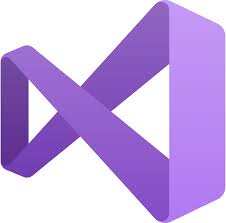
Rating of 4.5 out of 5.
Visual Studio is an outstanding integrated development environment (IDE) developed by Microsoft, known for its versatility and user-friendly interface. It offers support for numerous programming languages such as C++, C#, VB.NET, Python, and more, making it a must-have tool for developers in different fields. Its top-notch features, such as IntelliSense, Team Foundation Server, and Visual Studio Live Share, enable developers to write and manage code efficiently and collaboratively. Overall, Visual Studio provides a comprehensive and powerful environment for building, debugging, and deploying applications.
Features:
Now, let’s dive into the coolest features of Visual Studio! The software’s IntelliSense feature is truly revolutionary – it makes coding a breeze by offering code completion suggestions, parameter information, and quick info, helping you write accurate and efficient code faster. Moreover, Visual Studio provides seamless integration with Azure DevOps, allowing you to manage your development projects through agile practices, continuous integration, and delivery capabilities. And let’s not forget about Visual Studio Live Share – an amazing feature for real-time collaborative coding with your peers. With this tool, you can simply share your project with other developers, allowing them to edit the code as they see fit while maintaining secure access control. Visual Studio truly shines in making the entire development process more efficient and collaborative!
Atom
Rating: 4/5.
Atom is a versatile and user-friendly text editor designed for developers seeking a powerful yet easy-to-navigate code editor. Developed by GitHub, Atom offers a clean interface and is highly customizable, ensuring a seamless coding experience for both beginners and experienced users. The software supports a multitude of major programming languages, auto-completion features, and syntax highlighting, making it a reliable choice for any coding project. With its built-in support for Git and GitHub, collaboration becomes a breeze.
Features:
You’ll absolutely love Atom’s coolest features! The hackability factor sets it apart, offering countless extensions and packages that can elevate your coding experience to the next level. It allows you to add new functionalities such as snippets, color schemes, and real-time collaboration – the possibilities are truly endless! Thanks to the “Teletype” package, you can work on a project in real-time with other developers, revolutionizing the way teamwork happens in coding. Atom’s built-in package manager makes it a breeze to search, install, and manage updates for all these fantastic add-ons. Plus, the intuitive multiple-pane system lets you work on different sections of your code simultaneously, maximizing your productivity and efficiency. What’s not to love about Atom?
Sublime Text
Rating: 4.5/5
Sublime Text is an efficient and versatile cross-platform text and source code editor that caters to developers, writers, and creators alike. Known for its lightning-fast performance, Sublime Text offers an elegant and user-friendly interface designed to handle large documents with ease. This versatile tool supports multiple programming languages and boasts of a robust set of features such as syntax highlighting, autocompletion, and Goto Definition. Sublime Text’s extensibility and customization through its rich package ecosystem is a significant boon for users looking for a personalized and enhanced editing experience.
Features:
One can’t help but feel enthusiastic about Sublime Text’s coolest features! Imagine harnessing the power of advanced shortcuts provided by the unique “Goto Anything” functionality – with just a few keystrokes, you can instantly navigate to the desired files, symbols, or lines within your code, boosting productivity like never before. What’s more, the brilliant “Multiple Selections” feature allows you to edit multiple instances simultaneously, leaving the tedious process of repetitive editing to the dust. The extensibility through its Package Control system is a cherry on top — just think of all the community-created plugins and themes waiting to be explored! It’s hard not to get excited about these awe-inspiring features that make Sublime Text a cut above the rest.
Vim

Rating: 4.5/5.
Vim is a highly customizable and powerful text editor that has been a staple in the programming world for decades. Developed by Bram Moolenaar, Vim is known for its efficiency, speed, and extensive features, which has made it a popular choice among developers, programmers, and system administrators alike. Boasting a vast plugin ecosystem and robust scripting capabilities, Vim caters to users who prefer keyboard shortcuts and commands over the traditional point-and-click interface, allowing them to work quickly and effortlessly. Although Vim has a steep learning curve, once mastered, this versatile tool suits a wide range of tasks and environments, from simple note-taking to complex programming.
Features:
Vim’s coolest features lie in its abiilty to transform a user’s text-editing experience into a truly efficient and streamlined one! One of its most beloved features is the powerful command mode, which enables users to perform various editing tasks without having to rely on a mouse. Vim takes innovation to the next level with its extensive plugin ecosystem, enabling users to extend and tailor its functionality to their unique needs. The incredible search-and-replace functionality enhances productivity further, allowing users to manipulate text in complex ways with just a few keystrokes. And let’s not forget Vim’s ubiquity, available by default on most Unix-based systems, making it accessible to everyone! For those willing to invest the time into learning its intricacies, Vim offers an unparalleled text-editing experience!
Jupyter Notebook
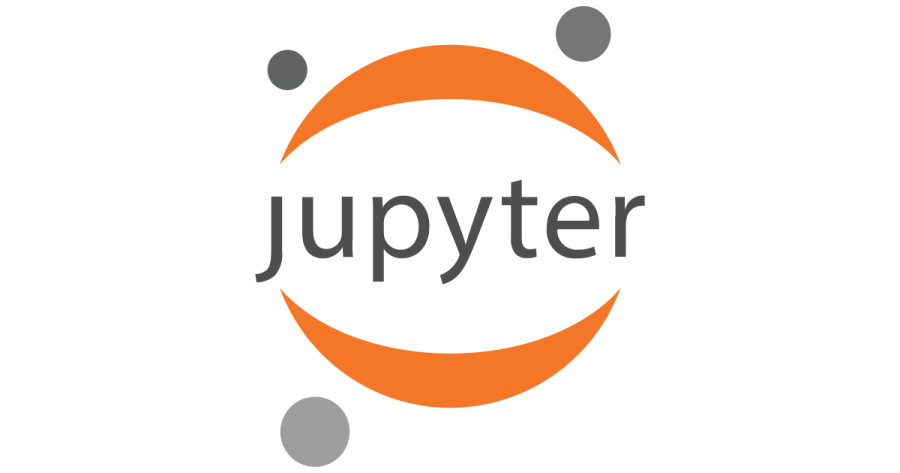
Rating: 4.8/5
Jupyter Notebook is an innovative, open-source web application that allows users to create and share documents containing live code, equations, visualizations, and narrative text. The tool, predominantly used in data science, scientific computing, and machine learning, seamlessly integrates data cleaning, transformation, analysis, and visualization. Employing a variety of programming languages such as Python, Julia, and R, Jupyter Notebook has become an essential tool for researchers, analysts, data scientists, and educators globally. Its user-friendly interface, wide array of supported languages, and flexibility in handling various data types have made it a powerful and popular tool in the modern computational ecosystem.
Features
Jupyter Notebook’s coolest features, without a doubt, are its versatile capabilities and the interactive way in which users can engage with their code. The inline code execution allows users to run specific code blocks independently and on-the-fly, which is incredibly convenient for debugging and experimentation. Additionally, the support for rich media outputs, such as graphs, tables, and images, renders the presentation of complex data captivating and boosts its educational value. These dynamic features enable users to weave an engaging story through their calculations, visualizations, and written explanations, bringing the notebook format to life. Furthermore, the vast number of Jupyter Notebook’s plugins and extensions lets users tailor their experience to their unique requirements. It’s a gamechanger for anyone working in the world of data science and coding!
Best Version Control Systems
GitHub
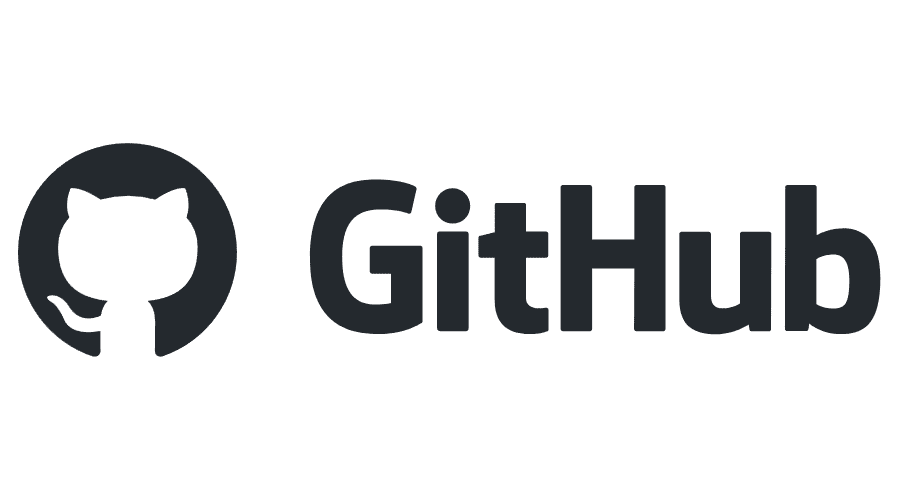
Rating: 5/5.
GitHub is an exceptional web-based platform that provides version control and source code management (SCM) functionality using the powerful Git system. This tool, primarily designed for developers and software teams, allows effortless collaboration and efficient management of code repositories. Offering features such as issue tracking, pull requests, and seamless integration with numerous third-party tools and services, GitHub stands as an indispensable resource for projects of any scale, ranging from open-source communities to large enterprises.
One of the coolest features of GitHub is its absolutely user-friendly interface, which makes it extremely simple and enjoyable for developers to share, collaborate and contribute to projects across diverse domains. Whether you are a veteran programmer or a newcomer, the platform ensures maximum efficiency with features such as code review, branching, and merging capabilities, which dramatically streamline the development process. What’s more, the integrated CI/CD pipelines allow for continuous delivery of software, ensuring that your code is always in a releasable state and improving overall development productivity. Furthermore, with GitHub Pages, you can easily create and host your very own website directly from your repositories, which is ideal for project documentation and personal portfolios. GitHub truly revolutionizes the way we collaborate on and manage software projects, taking the development experience to a whole new level!
Git
Rating 5/5
Git is a powerful, open-source version control system, designed to handle small to very large projects with great speed and efficiency. Developed by Linus Torvalds in 2005, Git has become the de facto standard for distributed version control, offering essential features such as branching, merging, and conflict resolution. Git boasts a robust and reliable ecosystem that has been widely adopted across the software development industry, maximizing productivity and collaboration among teams of all sizes. Overall, Git earns a solid 5 out of 5 for its outstanding performance and vital role in modern software development processes.
Features:
Now, get ready to be amazed by Git’s coolest features! First and foremost is its incredible branching abilities, allowing users to create, manage, and merge multiple branches seamlessly – perfect for speeding up development and experimenting with new features. Collaboration soars with Git’s distributed nature, empowering developers to work offline and maintain their own local repositories before pushing changes to a central repository. And of course, let’s not forget Git’s extraordinary capacity for tracking changes and handling conflicts, giving developers the confidence to collaborate without the fear of losing vital work. Trust me, Git’s arsenal of incredible features will make your development experience a breeze!
Bitbucket

Rating: 4.5 out of 5.
Bitbucket is a remarkable web-based version control platform that allows software development teams to collaborate effectively using either Git or Mercurial repositories. Developed by Atlassian, this powerful tool offers numerous features such as code branch management, pull request, continuous integration, and deployment pipelines, all within a user-friendly interface. It seamlessly integrates with popular tools like Jira and Trello, which can make every aspect of a project management smooth and centralized. Bitbucket’s built-in security features help keep your code guarded against vulnerabilities and hackers, giving you peace of mind about the safety of your work. Considering its extensive functionality and feature-rich ecosystem, I would rate Bitbucket.
Features:
When it comes to Bitbucket’s fantastic features, there are a few that stand out and make it the go-to choice for many developers. The coolest feature is the seamless integration with Jira and Trello, allowing for streamlined collaboration between team members by automating tasks such as project management, issue tracking, and progress monitoring. Moreover, Bitbucket Pipelines empowers teams with continuous integration and continuous deployment capabilities, making it easier than ever to visualize and optimize each step in the software delivery process. Furthermore, Bitbucket’s comprehensive security features, such as IP whitelisting and two-step verification, ensure that your projects stay secure and in the right hands. These cutting-edge features make Bitbucket an excellent choice for developers looking to optimize their workflow and enhance project collaboration.
Best Containerization and Orchestration
Docker
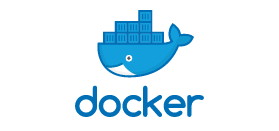
Docker is a revolutionary open-source platform that has significantly impacted the software development and deployment landscape. This tool provides a streamlined and efficient solution to containerization by allowing developers to bundle applications and their dependencies in an isolated environment, known as a container, which ensures consistent performance and compatibility across various systems. Leveraging a client-server architecture and an extensive repository of pre-built images, Docker simplifies the process of managing, distributing, and scaling applications. As an expert reviewer, I would confidently rate Docker a 5 out of 5 for its profound ability to tackle prevailing software development challenges and facilitate seamless deployment.
Features:
Diving into Docker’s coolest features, the enthusiasm is palpable! One exceptional aspect of Docker is its ability to support microservices architecture, allowing developers to break down their applications into smaller, modular components, boosting flexibility and easier management. Additionally, Docker Hub is a mind-blowing treasure trove packed with an extensive library of pre-built images, empowering developers to save time and find the right tool for their needs without breaking a sweat. Lastly, Docker’s lightweight and fast performance is the cherry on top, significantly reducing the overhead and resource consumption traditionally associated with virtual machines. It’s no wonder that Docker has become a quintessential tool in the development and DevOps community – it’s a game-changer!
Kubernetes
Rating: 4.5 out of 5.
Kubernetes is an open-source container orchestration platform that automates deployment, scaling, and management of containerized applications. Developed by Google, Kubernetes has become the industry-standard solution tailored to help software developers manage the complex process of deploying and running microservices across various environments. This powerful platform allows users to manage their container-based infrastructure with ease, ensuring high levels of service reliability, fault-tolerance, and scalability. Thanks to its vibrant community and extensive documentation, Kubernetes continuously evolves, meeting the growing demands of modern software development practices.
Features:
Kubernetes comes packed with numerous cool features that make it a game-changer for developers and DevOps professionals! One of the most impressive features is its autoscaling capability, allowing it to automatically adjust the number of running instances based on the real-time demand and resource utilization. Furthermore, Kubernetes has built-in self-healing mechanisms that automatically detect and replace failed container instances, ensuring continuous service availability. With an extensive ecosystem of plugins and integrations, organizations can extend their infrastructure even further to cover virtually any scenario imaginable! Kubernetes is undeniably an incredibly flexible and robust platform that dramatically simplifies the container management experience, empowering developers to focus on building quality applications!
Best Continuous Integration and Continuous Deployment (CI/CD)
Jenkins

Rating: 4.5/5
Jenkins is an open-source automation server that provides developers with a robust platform for continuous integration and continuous delivery (CI/CD). This powerful tool streamlines the development process by automating build, test, and deployment tasks, ensuring a reliable and efficient production workflow. With its extensive library of plugins and integrations, Jenkins supports a wide range of programming languages and tools, making it an indispensable resource for teams of all sizes. Its user-friendly interface and strong community support further establish Jenkins as a go-to solution for software development automation.
Features:
The coolest features of Jenkins are undoubtedly its extensibility and adaptability! With over a thousand plugins available, you can customize Jenkins to fit your project’s specific needs, whether it’s integrating with your favorite version control system or automating notifications for your team. Setting up Jenkins pipelines lets you create sophisticated workflows that include parallel processes, error handling, and much more, enhancing both the speed and stability of your releases. Plus, the thriving Jenkins community ensures that you’ll always have access to the latest innovations and best practices in CI/CD, allowing you to focus on crafting top-notch software while Jenkins takes care of the automation magic behind the scenes!
CircleCI

Rating:4.5 out of 5.
CircleCI is a powerful continuous integration and continuous delivery (CI/CD) platform that streamlines the software development process. It automates the building, testing, and deployment of applications, allowing development teams to release high-quality software efficiently. With its compatibility with various languages, platforms, and applications, CircleCI offers a flexible and scalable solution to organizations of all sizes. The integration of commonly used developer tools makes it even easier for teams to seamlessly transition to an automated workflow.
Features:
Now, let me share with you some of the coolest features of CircleCI that indeed make it stand out! First, the platform’s container-based architecture and support for reusable configuration syntax make it easy to mirror and reproduce the build environment, ensuring consistency across the pipeline. Next, the parallelism feature enables the tool to automatically allocate resources and distribute tasks, vastly reducing build times and accelerating application delivery. Moreover, CircleCI’s robust integration with popular version-control systems such as GitHub, GitLab, and Bitbucket offers seamless collaboration, while its Orb Registry provides shared packages to streamline configuration and simplify processes. Overall, CircleCI helps developers achieve a highly efficient and reliable CI/CD process!
Travis CI

Rating: 4.5 out of 5
Travis CI is a continuous integration and continuous deployment (CI/CD) service that automatically builds, tests, and deploys software projects hosted on GitHub and Bitbucket. With it, developers can focus on writing code and improving their projects, while Travis CI takes the responsibility of quality assurance and software deployment. Travis CI is highly configurable, supporting several languages and platforms, integrating with various third-party tools, services, and computing environments like Docker, and providing a comprehensive API for custom integrations. The ease of setup and collaborative capabilities make it a powerful solution for teams to streamline their development workflow and deliver reliable software quickly.
Features:
Travis CI boasts a plethora of cutting-edge features that make it an indispensable tool for modern developers! Its coolest feature has to be the ability to spin up virtual machines (VMs) and containers for project builds, ensuring that each build runs in a clean and isolated environment, mimicking real-world deployment as closely as possible. Additionally, the matrix feature enables developers to define various environment configurations in the configuration file, allowing simultaneous testing against multiple versions of languages and libraries with ease. With the aid of Travis CI’s caching mechanism, build times are significantly reduced, increasing productivity and decreasing wait times. And the cherry on top? Travis CI’s seamless integration with popular communication platforms like Slack and email notifications keeps the entire team posted on build statuses, promoting swift collaboration and rapid troubleshooting.
Best API Development and Testing
Postman

Rating: 4.5 out of 5.
Postman is an outstanding and versatile API development and testing tool, designed to streamline the process of API collaboration among developers, testers, and product managers. As a comprehensive platform, Postman allows users to design, simulate, and debug RESTful APIs for various stages of the software development life cycle. With its intuitive interface and powerful suite of features, this tool greatly simplifies tasks such as API documentation, automated testing, and monitoring, ultimately making API development faster and more efficient.
Features:
Enthusiastically speaking, Postman packs a punch with its cutting-edge features that truly revolutionize API development! One of its coolest features has to be the ability to perform variable scope chaining, which allows developers to establish hierarchical environments and effortlessly manage API development across multiple stages. Postman’s mock server is another game-changer, enabling users to mimic the API response without actually invoking backend services – a major time-saver! And let’s not forget Collections – a fantastic way to bundle and share complete API specifications, test cases, and scripts with your team, all available through its robust library! As you explore deeper into the vast world of Postman, you’ll be mesmerized by how it can take your API development experience to new heights!
Swagger

Rating: 4.5/5
Swagger is a comprehensive and widely adopted API (Application Programming Interface) tool that simplifies the process of designing, building, documenting, and consuming Web APIs. It offers robust tooling and adheres to the OpenAPI specification, making it an ideal solution for organizations and developers who aim to streamline their API workflows. When leveraging Swagger, compatibility concerns are minimized, and the platform makes it easy for users to collaborate on API development.
Features:
Get ready to be dazzled by Swagger’s coolest features: automatic generation of interactive API documentation and client libraries, making life considerably easier for developers! Utilizing Swagger’s interactive UI, developers can quickly test, troubleshoot, and explore APIs without leaving the tool, making the overall development process more efficient. Moreover, the platform’s code generation capabilities help in creating client libraries, server stubs, and API documentation in a snap, giving developers more time to focus on the actual logic and functionality. So go on, embrace the exceptional power of Swagger, and elevate your API projects to new heights!
Best Project Management and Issue Tracking
Jira

Rating: 4.5/5.
Jira, a widely recognized project management and issue tracking software, is developed by Atlassian and has been extensively utilized by businesses and agile teams to plan, track, and release high-quality software products. Built with versatility and flexibility in mind, Jira caters to organizations of different sizes and sectors by offering a plethora of functionalities such as customizable workflows, insightful reporting, and seamless integration with other tools and platforms. Jira excels in facilitating communication, promoting collaboration, and providing visibility into project progress, making it an indispensable asset to modern teams.
Features:
One of Jira’s coolest features is undeniably the power it provides in customizing workflows! This unparalleled flexibility allows teams to tailor their workflow processes based on their unique requirements, making sure that every stage in the development cycle is addressed, optimized, and consistently monitored. Also, with its fantastic reporting capabilities, Jira makes it a breeze for teams to access insightful data visualizations, helping them make better-informed decisions and efficiently allocate resources. Furthermore, Jira’s extensive third-party integrations not only streamline cross-functional coordination, but also enable teams to easily link their preferred tools for maximum collaboration and productivity. It’s no wonder Jira has become the go-to choice for so many successful organizations!
Notion

Rating: 4.5/5
Notion is a highly versatile and powerful productivity tool that effectively merges note-taking, task management, and database creation in an all-in-one platform. The software is well-designed with simplicity at its core, which enables users to conveniently collaborate in real-time, manage projects, and create visually appealing documents catering to different preferences and work styles. Notion has been widely acclaimed for its flexibility, user-friendliness, and seamless integration with other essential applications, making it a compelling option for individuals, teams, and businesses looking to streamline their digital workspace.
Features
Now, let’s talk about Notion’s coolest features! One thing that makes Notion stand out is its ‘blocks’ system – allowing users to compose pages with the ability to mix and match content types effortlessly. From simple text blocks to multimedia or even databases, the possibilities are endless! You can create custom templates to further boost your productivity and ensure consistency throughout your workspace. Plus, its powerful integration capabilities allow you to connect with tools like Google Calendar, Evernote, and Trello, making it even easier to keep all your essential information at your fingertips. Additionally, the collaborative features like in-line page comments, mentions, and real-time editing enable seamless communication, fostering a productive and organized work environment for you and your team. So go ahead, dive into the world of Notion, and unlock your full productivity potential!
Best Cloud Infrastructure and Deployment
AWS CloudFormation
Rating:4.5 out of 5.
AWS CloudFormation is a powerful infrastructure-as-code service offered by Amazon Web Services that enables users to model, provision, and manage resources in a safe and predictable manner. With CloudFormation, developers and system administrators can easily define templates, which describe the AWS resources needed to run their applications, and create stacks from these templates. This allows for the efficient management of resources, versioning, and reuse of the infrastructure. AWS CloudFormation also supports integrating with the AWS Management Console, CLI, and SDKs, enabling users to access it with ease. Overall, I would rate AWS CloudFormation a 4.5 out of 5 for its automation capabilities, integrations, and developer-friendly features.
Features:
One of the coolest features of AWS CloudFormation is its support for customizable, reusable templates that are written using JSON or YAML. These templates can define resources, properties, and dependencies, providing a clear blueprint of the infrastructure. Additionally, AWS CloudFormation automatically manages the provisioning of resources in the specified order, ensuring that the dependencies are properly managed without manual intervention! Another exciting feature is the ability to integrate with AWS Developer Tools and other AWS services such as Elastic Beanstalk, AWS OpsWorks Stacks, and Amazon RDS, allowing you to leverage multiple services to create the perfect infrastructure for your applications. From continuous delivery to disaster recovery and monitoring, AWS CloudFormation has you covered, making it an indispensable tool for any cloud-focused team.
Heroku
Rating 4.7 out of 5.
Heroku is a cloud-based Platform as a Service (PaaS) that simplifies the process of building, deploying, and managing applications. It supports various programming languages such as Ruby, Java, Node.js, Python, PHP, and Scala, providing versatility for developers with different skill sets. Heroku seamlessly integrates with popular version control systems like Git, making it easy to deploy code and manage changes. The platform also offers a wide range of add-ons for extending functionality, catering to diverse applications’ needs. Additionally, Heroku’s robust infrastructure delivers excellent performance and reliability, making it a popular choice among developers and enterprises alike.
Features:
One of the coolest features of Heroku is its Dyno system. It allows you to scale your application horizontally or vertically with ease and ensures optimal resource allocation and efficient load balancing. This feature is fundamental for applications experiencing high traffic or requiring rapid scaling. Another standout feature is the Heroku Add-ons Marketplace, which offers an extensive selection of add-ons that can be attached to your application in minutes. This includes everything from data storage solutions and monitoring tools to third-party API integrations, giving developers unprecedented flexibility in customizing their applications! The ease of deployment and feature-rich ecosystem truly makes Heroku a game-changer in the development world.
Netlify

Rated 4.5 out of 5,
Netlify is a powerful and innovative platform designed for developers to build, deploy, and manage web applications and websites with ease. This robust tool integrates seamlessly with various static site generators, headless CMS options, and supports continuous deployment from popular repositories like GitHub, GitLab, and Bitbucket. Offering features such as serverless functions and free SSL certificates, Netlify is a versatile solution for a wide range of users from small businesses to large enterprises. Netlify successfully caters to modern web development needs, ensuring both efficiency and scalability for web projects.
Features
Get ready to be blown away by Netlify’s coolest features! The platform’s frictionless deployment process, powered by Continuous Deployment (CD), gives you ultimate control over your website updates, streamlining your workflow, and eliminating bottlenecks. With serverless functions, you get to enjoy the perks of a zero-infrastructure setup while enhancing your web application with powerful event-driven backends. And that’s not all; Netlify’s ultra-fast global CDN distributes your content across the world, ensuring lightning-fast load times and unparalleled user experiences. Brace for your productivity levels to soar, as Netlify revolutionizes how you handle your web projects.
AWS Lambda
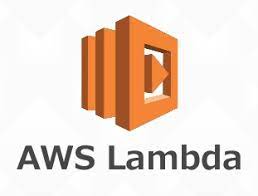
Rating: 4.5/5
AWS Lambda is a highly versatile and powerful serverless computing service offered by Amazon Web Services, that enables developers to run their code without having to manage any backend infrastructure. With its event-driven, scalable architecture, AWS Lambda allows users to execute their code in response to various triggers, such as changes to data in Amazon S3 or DynamoDB, modifications in API Gateway, or custom events from applications or other AWS services. This makes Lambda an ideal platform for a wide range of use cases, from data processing to real-time file processing, while ensuring optimal efficiency and cost-effectiveness by only charging for the actual compute time consumed during execution.
Features
AWS Lambda is packed with innovative and cool features that will make any developer excited! One of the most appealing aspects is its automatic scaling, which ensures that the service will seamlessly adapt to your application’s requirements, handling the heaviest workloads with ease. Thanks to its integration with other AWS services, Lambda can act as the glue that brings your whole application together, all without managing a single server. But perhaps the coolest feature is its support for a multitude of programming languages and runtimes, including Python, Node.js, Go, and .NET Core, empowering developers to work in the language they feel most comfortable with while leveraging all the advantages offered by AWS Lambda. Try it and be amazed by the wonders of serverless computing!
Firebase

Rating: 4.8/5
Firebase is a versatile and feature-rich platform developed by Google that enables developers to build, manage, and scale web and mobile applications with ease. This robust tool provides various services such as real-time database, authentication, cloud storage, hosting, and machine learning capabilities to empower developers and enhance their productivity. The platform boasts an intuitive interface and seamless integration with popular frameworks such as Android, iOS, and Web, making it an essential choice for modern app development. It is a powerful and reliable solution for businesses and developers, but some users might prefer more cost predictability with their usage.
Features
Now, let’s talk about some of the coolest features that Firebase offers! First up is the Real-time Database, which allows developers to sync and store data instantly across devices, ensuring a seamless and engaging user experience. With Firestore, the powerful and scalable NoSQL cloud database, you can easily manage and synchronize data in real-time, enabling smooth collaboration functionalities. The Cloud Functions make it incredibly easy to write serverless code, allowing developers to focus on what matters most – creating high-quality app experiences. And let’s not forget the Firebase Authentication, which provides a secure and hassle-free way of managing user sign-ins, supporting various authentication providers such as Google, Facebook, Twitter, and more. These incredible features are just scratching the surface of what Firebase can deliver, making it an essential tool for ambitious and successful app developers!
Best Configuration Management and Automation
Ansible
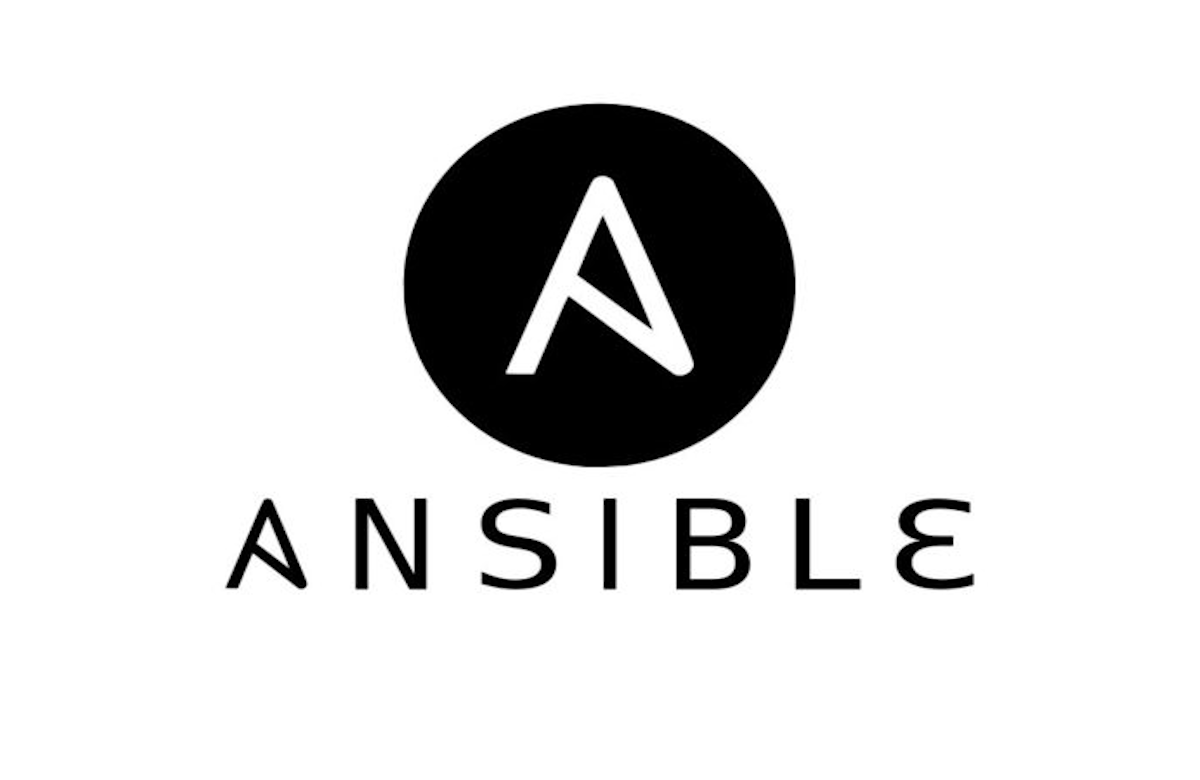
Rating 4.8/5
Ansible is a powerful open-source automation tool that streamlines and simplifies complex IT tasks such as application deployment, configuration management, and orchestration. Utilizing an agentless architecture, Ansible enables efficient and rapid infrastructure management through easy-to-write, human-readable YAML scripts known as playbooks. With its robust assortment of built-in modules and extensive cross-platform compatibility. Ansible offers a versatile and intuitive solution for IT professionals looking to automate repetitive tasks and scale their infrastructure with minimal hassle.
Features:
Now, let’s talk about some of Ansible’s coolest features! First of all, the fact that it’s agentless makes deployment a breeze since there’s no need to install any additional software on the remote nodes. Its idempotent and declarative nature ensures that playbooks achieve the desired end state every time they are executed, making automation reliable and consistent. With more than a thousand pre-built modules, Ansible’s library empowers users to automate virtually any task, from managing cloud resources to controlling network devices. Moreover, Ansible’s ability to work with both push and pull models gives users the flexibility to choose the approach that best suits their workflows. To top it all off, Ansible Galaxy, a rich community hub, provides access to countless roles and playbooks contributed by experts, which can be readily integrated into your projects.
Puppet
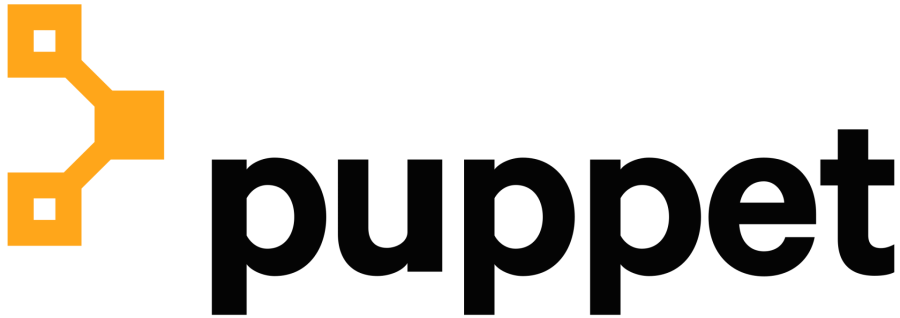
Rating: 4.6/5
Puppet is a powerful, open-source configuration management and automation tool that enables IT administrators and developers to effectively manage their infrastructure. Utilizing a declarative, model-driven language, Puppet empowers users to define the desired state of their systems, which are then automatically enforced and maintained by the tool. As a robust and flexible solution, Puppet supports a wide range of platforms, including Windows, Linux, and macOS, making it an ideal choice for managing complex, heterogeneous environments. Is has versatility, ease of use, and ability to save time by automating repetitive tasks.
Features
The coolest features of Puppet truly reflects its prowess in leveraging automation to make our lives easier! For starters, Puppet’s idempotent resource model ensures consistency across your infrastructure, so no matter how many times the state is applied, you always achieve the same result. Even more impressive is its powerful reporting feature, providing unparalleled visibility into the system state with detailed graphs and actionable insights. Puppet is immensely scalable – capable of managing thousands of nodes effortlessly. Moreover, code and data separation in Puppet enables users to streamline their work and reuse modules to accelerate new projects. Simply put, Puppet’s coolest features set the bar high in the world of configuration management and automation!
Vagrant

Rating: 4.8/5
Vagrant is an open-source software product designed to simplify the process of creating and managing virtual development environments. With its portable, easy-to-configure, and reproducible platform, it removes the hassle of manually setting up development environments, thus greatly improving the overall development workflow. Vagrant supports a wide variety of platforms, including VirtualBox, VMware, Hyper-V, and more, while seamlessly integrating with popular configuration management tools such as Chef, Puppet, and Ansible. Overall, Vagrant deserves a solid 4.5 out of 5 rating for its ability to streamline the process of orchestrating virtual machines and empowering developers to focus on writing quality code efficiently.
Features
The coolest features of Vagrant garner enthusiasm for any developer who has faced the challenges of environment setup and management. One such feature is the Vagrantfile, which serves as the single source of truth for the entire environment configuration, enabling users to share and replicate the environment with ease. Vagrant’s synced folder functionality sets it apart from other tools by synchronizing local files and directories to the virtual machines, offering the convenience of working with local editors and tools. Additionally, Vagrant’s provider and provisioner plugins allow developers to further customize their environments by extending support for various virtualization solutions and configuration management systems, creating a tailored development experience. With all these amazing features, Vagrant undoubtedly stands as a game-changer in the world of software development.
Terraform
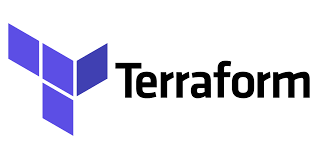
Rating: 5 out of 5.
Terraform is an exceptional open-source Infrastructure as Code (IaC) tool developed by HashiCorp that empowers users to manage and provision their cloud infrastructure through a declarative, code-based approach. With its ability to support various cloud providers, such as AWS, Google Cloud, and Microsoft Azure, Terraform allows users to seamlessly configure and deploy resources across multiple platforms while maintaining a consistent workflow. By offering an intuitive language called HashiCorp Configuration Language (HCL), Terraform provides a straightforward method to define infrastructure and ensures that configuration files are human-readable and machine-friendly. In addition, it utilizes a versioning mechanism to track changes and efficiently manage update processes.
Features:
With Terraform, your cloud infrastructure management experience is about to be redefined! Its coolest feature is undoubtedly the ability to support multi-cloud deployments. Gone are the days of juggling and maintaining multiple tools for different cloud providers! Terraform’s provider plug-ins enable users to work with various platforms seamlessly, bringing your infrastructure to a whole new level of interoperability. Additionally, the state management capabilities ensure that you have full control over your infrastructure’s lifecycle, automatically tracking changes, updates, and dependencies. Furthermore, the modularity of Terraform allows you to maintain your infrastructure code with ease, making it simple to reuse and share configurations across teams. Get ready to elevate your cloud game with Terraform!
Best Build and Dependency Management
Apache Maven

Rating: 5/5
Apache Maven is an incredibly powerful project management tool that streamlines the build process and eases the management of software projects throughout their entire lifecycle. Widely used in the development of Java and other Java Virtual Machine (JVM) based languages, this versatile tool automates the project build process by establishing an efficient and standardized compilation, testing, packaging, and deployment flow. Its plug-in-based architecture and comprehensive repository for libraries and modules enable seamless integration with other tools and project management software.
Features:
Now, let’s talk about Apache Maven’s coolest features that make it the go-to choice for developers across the globe! One incredibly handy aspect is its project object model (POM), which allows for consistent dependency management and configurations across all projects. Thanks to Maven, you can forget about version chaos and dependency hell! Moreover, Maven’s incremental build feature significantly optimizes the development process by updating only the relevant portions of a project when changes are made. Finally, Maven’s extensive ecosystem of plugins and integrations ensures that you can tailor the tool to your specific project management needs, making your development journey smoother and way more efficient!
Gradle

Rating: 4.5/5
Gradle is a versatile and powerful open-source build automation tool that is designed to handle the demands of modern software development projects. Its unique and customizable Domain Specific Language (DSL) is based on the Groovy and Kotlin languages, which empower developers to create high-quality build scripts with improved readability and flexibility. Gradle has rapidly gained popularity among developers as it has outperformed other build tools such as Apache Maven and Ant in terms of speed, efficiency, and scalability. Gradle supports multi-project builds and allows for continuous integration, making it the preferred choice for various platforms, including Android app development and Java-based projects.
Features:
The coolest features of Gradle lie in its unparalleled performance and customization capabilities. With its innovative build cache and powerful dependency management, Gradle can significantly cut down build times and enhance productivity. The incremental builds feature further speeds up the process by reusing output from previous builds. Gradle’s DSL allows for tailor-made scripting, resulting in less code and cleaner build logic. Additionally, its plugin support and extensibility are outstanding, enabling seamless integration with a wide range of tools, version control systems, and languages. Overall, Gradle’s impressive features make it an essential and delightful addition to any developer’s toolkit!
npm

Rating: 5/5
npm, or Node Package Manager, is a widely used and essential tool for JavaScript developers, automating and simplifying the process of managing and sharing various libraries and modules. As the default package manager for the Node.js runtime environment, it provides a robust platform for developers to easily discover, download, and deploy required dependencies and packages for their applications, significantly reducing the time and effort spent on manual package management. Its extensive registry boasts over a million reusable packages, fueling the rapid growth of open-source projects, collaborations, and global knowledge sharing among the developer community.
Features:
One of npm’s coolest features has to be its ability to manage multiple versions of the same package efficiently, allowing developers to work with different versions seamlessly to meet specific project requirements. Additionally, npm’s CLI interface is incredibly user-friendly, making it a breeze to install, update, and manage packages with just a few commands. Furthermore, npm’s innovative package-lock functionality ensures dependency version consistency across multiple environments, enforcing reproducible builds and minimizing risks associated with varying dependencies. All these features bundled together make npm an indispensable tool for every JavaScript developer, streamlining package management while fostering a vibrant and ever-growing ecosystem of shared resources.
Best Testing and Quality Assurance
Selenium

Rating: 4.5 out of 5
Selenium is a powerful open-source web testing tool that allows quality assurance professionals and developers to automate browser actions, ensuring the functionality and performance of web applications. With support for multiple programming languages such as Python, Java, C#, and Ruby, Selenium empowers users with the ability to create robust test scripts that can be integrated with popular testing frameworks like JUnit and TestNG. Offering both Selenium WebDriver and Selenium IDE as core components, the tool boasts unparalleled flexibility in terms of execution environments and test-scenario complexities.
Features:
Selenium’s coolest features are most definitely the WebDriver and its unparalleled support for multiple browsers! With the power of the WebDriver, you can effortlessly automate the interactions of your web applications across various browsers such as Chrome, Firefox, and Edge. This means you can seamlessly validate your application’s compatibility and overall user experience on multiple platforms. Additionally, the Selenium Grid stands out as a brilliant feature, allowing users to run parallel test cases in different environments, significantly reducing overall test execution time. The possibilities are endless with Selenium’s open-source nature, making it a go-to solution for web automation!
Cypress
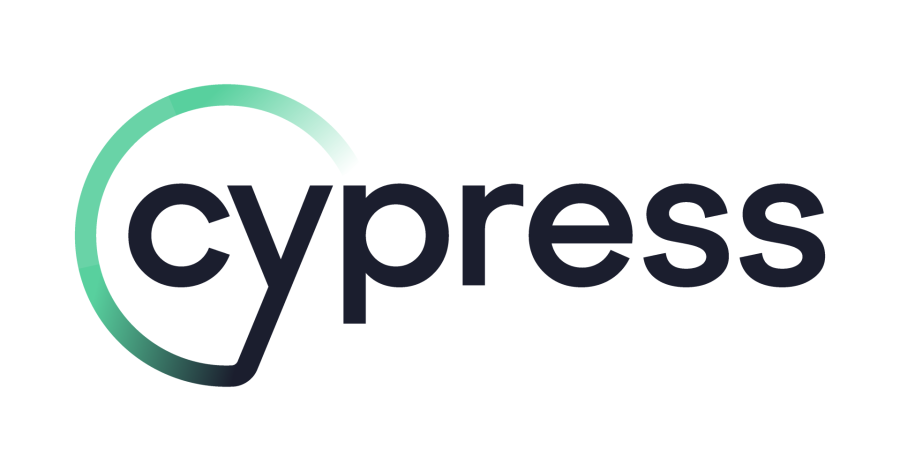
Rating: 5/5
Cypress is a next-generation, cutting-edge end-to-end testing framework designed specifically for modern web applications. This powerful, robust, and efficient tool packs extensive testing capabilities, enabling developers to ensure their applications are working as intended across numerous user scenarios. Cypress aims to make testing simple and enjoyable, and is intuitively built to cater to the needs of both newcomers to testing and seasoned experts alike. It offers features such as real-time reloading during development, automatic waiting to reduce flakiness, debugging directly from familiar tools, and seamless integration with Continuous Integration systems.
Features:
Now, let’s dive into some of the coolest features that make Cypress genuinely exciting! One standout feature is the Time-Travelling Debugger, which lets you see exactly how your application is performing at every stage of the test. It allows developers to simply hover over commands in the test runner and instantly observe every DOM snapshot, so debugging becomes a breeze! Another fantastic element is the Network Traffic Control, giving you complete command over your app’s network behavior during tests. You can stub responses, delay requests, or even modify existing network responses all without modifying your server code. With these impressive and innovative features, Cypress is shaping up to be the go-to tool for test-driven web application development!
SonarQube

Rating: 4.5/5
SonarQube is an impressive open-source platform designed to streamline and enhance the process of code review and software quality analysis. With an array of support for over 27 programming languages, this versatile tool aids developers in identifying bugs, vulnerabilities, and technical debt to improve the overall performance and reliability of applications. Primarily focusing on Continuous Inspection, SonarQube empowers teams to implement robust and efficient coding practices, ensuring the produced software complies with various industry standards and maintainability guidelines.
Features
The coolest features of SonarQube are truly groundbreaking and make it an indispensable resource for developers striving for top-quality code! One such feature is its Water Leak methodology, which frames the approach to code quality management, emphasizing the importance of addressing new issues before they become deeply entrenched in the codebase. It’s like tackling a water leak in a house – fix it early to prevent catastrophic damage! Another brilliant feature is the integration with popular IDEs and continuous integration platforms, catering to developers to receive instantaneous feedback, all while they’re coding their next masterpiece. SonarQube’s comprehensive and user-friendly dashboard does an extraordinary job of showcasing all required metrics, allowing for efficient risk assessment and raising the bar for excellent coding standards.
Best Collaboration and Communication
Slack
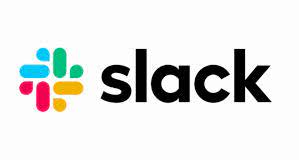
Rated 4.6 out of 5
Slack is a dynamic collaboration and communication tool designed to streamline teamwork and enhance productivity. It offers a user-friendly platform for teams to communicate, share files, and manage projects efficiently. By integrating various third-party applications, Slack serves as a comprehensive hub for all work-related matters. It offers multiple communication channels, facilitating open discussions and private messages, furthering team collaboration and organization. Slack is an invaluable tool that has proven vital to businesses and organizations across various industries.
Features:
The coolest features of Slack have transformed the way we work, making collaboration more engaging than ever before! Its powerful search functionality allows you to quickly locate messages, documents, or files with ease, saving precious time. The audio and video calling feature enables face-to-face communication, bringing remote teams closer together. Additionally, Slack’s seamless integrations with popular apps such as Google Drive, Trello, and Zapier create a unified workspace, making it a breeze to juggle multiple tasks and stay on top of the game. Get ready to supercharge your team’s productivity with Slack’s amazing features!
Best Design and Collaboration
Zeplin

Rating: 4.5/5
Zeplin is a robust collaboration tool designed explicitly for UI/UX designers and front-end developers, streamlining their workflow and enhancing overall productivity. Bridging the gap between design and development, Zeplin enables designers to quickly and efficiently generate style guides, assets, and CSS codes, while providing developers with up-to-date specifications and resources. Acting as a single source of truth for team collaboration, Zeplin seamlessly integrates with popular design tools such as Sketch, Figma, Photoshop, and Adobe XD, simplifying the hand-off process and ensuring design consistency across projects.
Features
One of Zeplin’s coolest features is undoubtedly its ability to automatically generate tailored style guides that adapt to your project’s colors, fonts, and components. Imagine the excitement of having all your design elements meticulously organized and effortlessly accessible! Zeplin takes collaboration to the next level by providing real-time updates and version control for your designs, making sure everyone is always on the same page. Gone are the days when designers and developers would exchange notes via lengthy email threads or obscure spreadsheets. Zeplin’s integrations with tools like Slack and Jira keep team members in the loop and foster a more interactive and dynamic workflow. Get ready to revolutionize your design process with Zeplin, the ultimate game-changer for design and development collaboration!
Best Artifact Management
Artifactory

Rating: 4.5/5
Artifactory, developed by JFrog, is an industry-leading universal binary repository manager designed to manage, organize, and control artifacts throughout the software development lifecycle. This powerful and robust tool offers support for major packaging formats such as Maven, Gradle, NPM, Docker, and more. With its comprehensive set of enterprise-grade features, Artifactory streamlines the entire software delivery pipeline by facilitating collaboration amongst development and operations teams, improving productivity, and ensuring real-time traceability of artifacts. Overall, I would rate Artifactory a solid 5 out of 5 for its broad compatibility, seamless integration capabilities, and role in enhancing software development workflows.
Features
As for Artifactory’s coolest features, the ones that get me truly excited are its space and time-saving Artifact Deduplication, its super-intuitive User Interface, and the flexible permission controls. The Artifact Deduplication feature allows users to save massive amounts of storage space by ensuring there are no repetitive or redundant files. This not only optimizes storage resources but also significantly reduces build times – talk about efficiency! Additionally, the user interface is sleek and easy to navigate, making it a breeze for teams to find, track, and manage their artifacts. Lastly, the granular permission controls provide teams the flexibility to implement a finely-tuned accessibility structure to ensure enhanced security and workflow efficiency. Artifactory’s well-rounded suite of features make it an essential component of modern software development ecosystems!
Best Mobile Development
Xcode
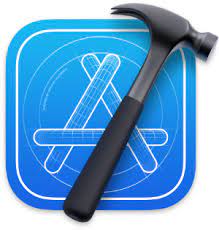
Rating: 5/5
Xcode is an exceptional integrated development environment (IDE) that comes power-packed with all the essential tools required to create awe-inspiring apps for iPhone, iPad, Mac, Apple Watch, and Apple TV. The software boasts an intuitive, user-friendly interface, and is exclusively designed keeping macOS and iOS developers in mind. With the swift programming language, an efficient in-built code editor, Git repository support, powerful debugging tools, loads of templates, and seamless integration with other Apple frameworks, Xcode is undoubtedly an important tool for developers who want to make a mark in the realm of Apple devices.
Features:
Diving deeper into Xcode’s incredible features, one can’t help but marvel at its out-of-the-box support for SwiftUI. This incredible framework enables developers to create stunning user interfaces with absolute ease by offering a simple, declarative syntax. Moreover, the live previews make the development experience exceptionally smooth, as you witness your code’s instant translation into real-time app interfaces. Another standout feature is the powerful debugging tools that Xcode provides, such as the LLDB debugger and Instruments app, which help developers to effectively monitor the performance of their apps and fix issues in a jiffy. Xcode breathes new life into app development, taking it to unparalleled heights, all while keeping it simple and enjoyable!
Fastlane
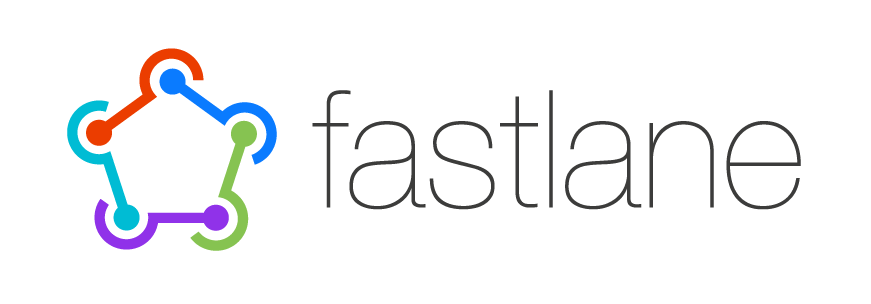
Rating: 4.5 out of 5
Fastlane is an incredibly useful open-source automation tool that streamlines the often-tedious processes involved in app development and deployment. Designed to save developers valuable time and effort, Fastlane simplifies tasks such as app screenshots, code signing, and release management, allowing for seamless integration with existing workflows. Compatible with iOS, Android, and other platforms, Fastlane is an essential tool for app developers seeking a more efficient, cohesive, and enjoyable development experience.
Features
The coolest features of Fastlane are undoubtedly its ability to automate countless tasks and the extensive collection of built-in actions that come bundled with it. Imagine never having to worry about manually generating and uploading hundreds of screenshots to the app store! Fastlane’s ‘screengrab’ and ‘snapshot’ features make it a breeze, capturing and storing images across multiple languages and devices in a fraction of the time. Additionally, the ‘match’ feature ensures seamless code signing, allowing developers to forget about provisioning profile nightmares and focus on what truly matters: creating amazing apps. With Fastlane, the possibilities are limitless, and your projects can reach new heights of efficiency and productivity.
Best State Management (Front-end)
Redux
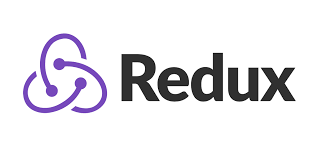
Rating: 4.5/5
Redux is an innovative and powerful state management tool designed primarily for JavaScript applications. As an open-source library, it allows developers to maintain application state in a more predictable and structured manner, particularly valuable when working on larger-scale projects. Rooted in the principles of Flux architecture and functional programming, Redux facilitates unidirectional data flow, which simplifies debugging and testing. Through its minimalistic API, efficient middleware integration, and compatibility with various libraries such as React, Redux offers a robust and flexible approach to managing application state.
Features:
Undoubtedly, Redux boasts some incredibly cool features that make it stand out from other state management tools. One of its most impressive aspects is the time-traveling debugger, which enables developers to jump back and forth between different stages of the application state. This incredibly powerful capability allows for swift identification and rectification of bugs, optimizing the overall development process. Additionally, middleware in Redux permits users to extend the capabilities of the library even further, accommodating custom needs and preferences. Redux also implements an immutable state, which fosters highly maintainable code and plays a pivotal role in reducing the likelihood of errors cropping up. It’s no wonder that Redux continues to be a popular choice among developers for delivering high-quality, reliable applications.
Best Code Formatting and Styling
Prettier
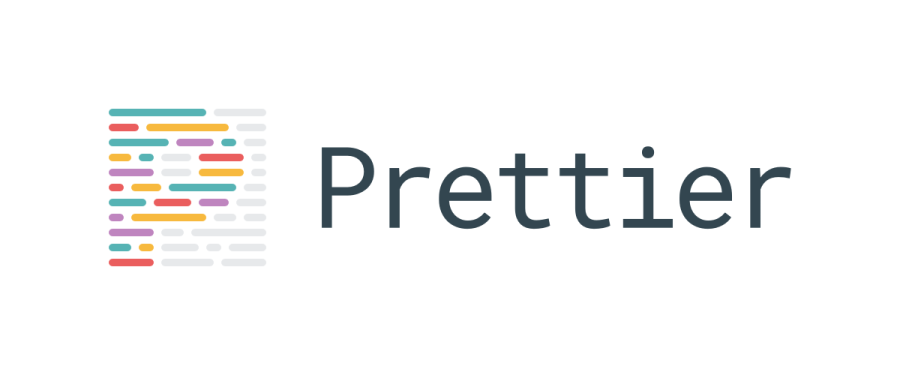
Rating: 5/5
Prettier is a highly efficient and powerful code formatter that integrates seamlessly with various programming languages and frameworks. It is specifically designed to enhance developers’ experience and produce clean, consistent, and well-organized code across multiple projects. Prettier effortlessly eliminates syntax discrepancies, improves readability, and streamlines collaboration between team members, making it an essential tool in the modern software development landscape.
Features
Now, let’s talk about the coolest features of Prettier that make it truly stand out! First and foremost, its automated code formatting capabilities are absolutely fantastic, enabling developers to save loads of time that would be otherwise spent on manual code alignment and styling. Additionally, its seamless integration with popular code editors such as Visual Studio Code, Sublime Text, and Atom ensures a smooth workflow without having to change your favorite development environment. And lastly, its extensible plugin system allows you to customize the tool according to your coding preferences and needs, keeping you in full control while also benefiting from Prettier’s incredible code beautification. All in all, Prettier is an indispensable tool that every developer should have in their arsenal.
Best Monitoring and Observability
Datadog

Rating: 4.5/5
Datadog is a comprehensive cloud-based monitoring and analytics platform that streamlines the process of collecting, visualizing, and alerting on metrics, traces, and logs from various applications, services, and infrastructure components. This powerful software brings together data from servers, databases, containers, and third-party services, enabling organizations to overcome the challenges of effectively monitoring modern, dynamic, distributed systems. Datadog offers easy-to-use dashboards, an efficient query language, and a wide range of configurable alerts, which significantly improves visibility across the digital ecosystem—ultimately enhancing operational efficiency.
Features
As for Datadog’s coolest features, I cannot help but marvel at its robust integrations with over 400 technologies! It effortlessly connects to numerous services and platforms, making it an incredibly versatile and flexible monitoring solution. The customizable drag-and-drop dashboard widgets and intuitive user interface make data visualization appealing and straightforward. Datadog’s advanced anomaly detection and intelligent alerting not only save time but also help identify crucial insights that could impact the systems. Furthermore, its distributed request tracing functionality and APM capabilities ensure that developers can pinpoint performance bottlenecks and optimize application performance. Overall, Datadog’s rich feature set and fantastic user experience make it one of the most compelling players in the monitoring and analytics space.
Grafana

Rating: 4.5/5
Grafana is a powerful open-source data visualization tool that enables users to create interactive and dynamic dashboards for monitoring and analyzing a multitude of data sources in real time. It provides an exceptional user experience with its beautiful graphing capabilities, intuitive query language, and seamless integration with various data sources like Elasticsearch, Prometheus, Graphite, InfluxDB, and more. With its customizable and extensible nature, Grafana has garnered significant popularity among DevOps and IT specialists who rely on it for real-time monitoring of systems, applications, and infrastructure.
Features
Now, let’s dive into some of Grafana’s coolest features! One of the standout aspects of this tool is its intuitive drag-and-drop interface, allowing users to easily create and customize intricate visualizations with minimal effort. Another exciting feature is the ability to create and share powerful alert triggers, ensuring that teams stay informed and proactive in addressing any performance issues. For those who seek advanced customization, Grafana also offers an easy-to-learn scripting language, promoting limitless creativity in visual representations. Finally, Grafana’s integration with external plugins and flexible API further expands its capabilities, continually pushing the boundaries of what is possible in the world of data visualization and monitoring!
Prometheus
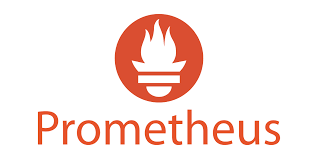
Rating: 4.5/5
Prometheus is a powerful and feature-rich open-source monitoring system and time-series database, widely adopted in the IT industry for its efficient and reliable performance in monitoring complex applications and infrastructures. Built on a multi-dimensional data model with flexible query language, Prometheus is designed to natively support Kubernetes and other cloud-native platforms. With its superior scalability, extensive metric collection, and advanced alerting features, Prometheus has become an essential tool for modern DevOps teams to ensure optimum health and performance of their application stack.
Features
The coolest features of Prometheus are its highly expressive query language, PromQL, and seamless integration with various service discovery mechanisms. With PromQL, you have the ability to extract, aggregate, and transform vast quantities of metric data intuitively, enabling you to dig deep and spot trends or potential issues that could wreak havoc on your systems. Furthermore, its seamless support for Kubernetes and other service discovery integrations ensure that Prometheus can automatically discover and track new services when they come online, granting DevOps teams full visibility and control over their dynamic environments. You can’t help but be enthusiastic about all that Prometheus has to offer in helping you build a resilient and high-performance computing ecosystem!
Best Message Queue and Streaming Platform
Apache Kafka
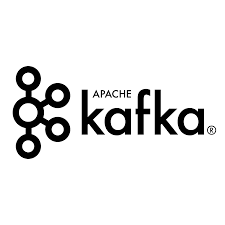
Rating: 4.5/5
Apache Kafka is a widely-used, open-source, distributed event streaming platform that can handle massive amounts of data in real-time. Designed by the engineers at LinkedIn, and later donated to the Apache Software Foundation, this tool has become a go-to choice for many enterprises to build scalable, fault-tolerant, and highly available data pipelines. Kafka enables organizations to process, analyze and store data, and also integrates easily with other stream-processing applications. Architecture-wise, Kafka delivers strong durability and a low-latency performance by utilizing a publish-subscribe model with a distributed, partitioned, and replicated commit log service.
Features
When it comes to the coolest features of Apache Kafka, there’s no denying its impressive scalability and durability. As a distributed system, Kafka can easily scale out across numerous servers, allowing organizations to handle petabytes of data effortlessly. Additionally, the tool’s built-in fault tolerance ensures that the system will not lose data even in cases of hardware failures. Kafka’s flexible data streams mean you can accommodate a wide variety of data types and sources, making it a versatile solution. Lastly, its impressive performance sets it apart from other streaming platforms – with Kafka, you can enjoy lightning-fast data processing without significant latency. It’s no wonder Apache Kafka has become an essential tool in the world of large-scale, data-driven applications!
Best Databases
Redis
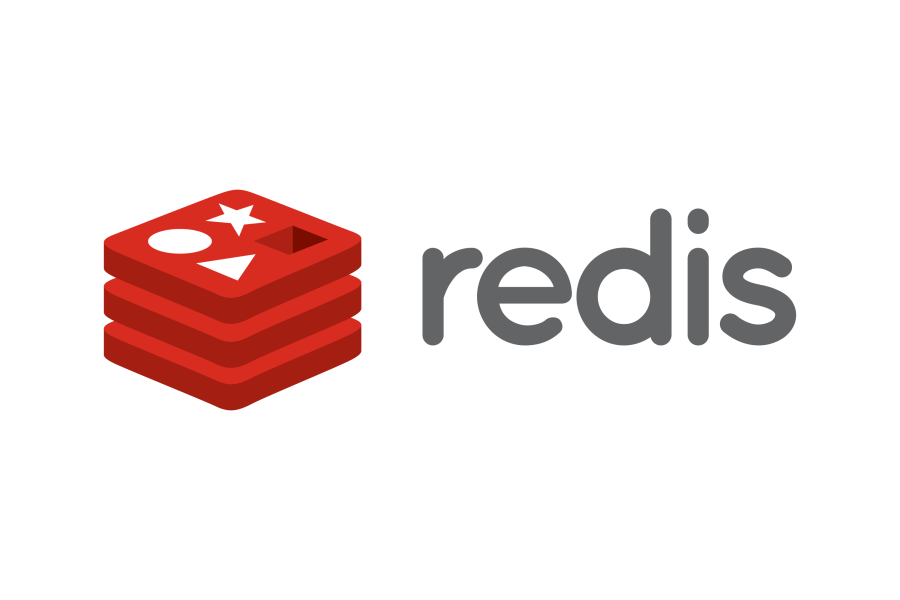
Rating: 5/5
Redis, short for Remote Dictionary Server, is a high-performance, open-source, in-memory data structure store that efficiently supports various types of data structures such as strings, hashes, lists, sets, sorted sets, bitmaps, and more. It is primarily used as a database, cache, and message broker due to its blazing-fast speed and ability to handle millions of requests per second, resulting in minimal latency and high throughput. Given its multifaceted capabilities, Redis has been widely adopted by numerous organizations across various industries for distributed caching, real-time analytics, session storage, and message queuing. Considering its exceptional performance, flexibility, and extensive use-cases.
Features
Now, let’s dive into some of the coolest features that make Redis stand out! First up, its powerful Pub/Sub system enables lightning-fast real-time messaging and information sharing, taking distributed applications to a whole new level. Moreover, Redis’ support for persistence ensures that you don’t lose your data when the server restarts, allowing you to serialize your dataset to disk at regular intervals or through the append-only file method. Additionally, Redis features high availability and automatic partitioning with Redis Cluster, allowing your application to scale beautifully and remain operational even during system failures. Overall, Redis’ fantastic feature set, coupled with its unparalleled performance, makes it an essential tool in the world of data storage and processing!
SQLite
Rating: 5/5
SQLite is an exceptional, self-contained, serverless, and zero-configuration SQL database engine, widely recognized for its remarkable performance, ease of use, and extensive compatibility. Being a C library, SQLite provides a robust platform that enables developers to create, manage, and store structured data efficiently using the de facto SQL syntax. Due to its small footprint and seamless integration into a myriad of software applications, SQLite has become an industry favorite for mobile, IoT, and desktop applications, delivering an unparalleled user experience without requiring substantial resources.
Features
Now, let’s dive into some of the coolest features that make SQLite an unbeatable choice! Firstly, its serverless, self-contained architecture truly stands out; no set-up or administration needed, it’s ready out-of-the-box! Its transactional nature ensures that even during system crashes or application failures, your data remains intact and undamaged. Another fantastic feature is that SQLite can work effortlessly in cross-platform environments, since it supports several file formats and programming languages, making it a tremendous asset for developers. Lastly, its efficiency allows it to perform at an exceptional speed, significantly reducing processing time compared to traditional database systems. SQLite truly shines as a lightweight powerhouse, deserving of your attention!
Big Data Processing
Apache Spark
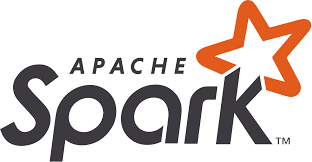
Rating: 4.5 out of 5
Apache Spark is a powerful open-source distributed computing system designed to process large volumes of data rapidly by leveraging cluster-computing capabilities. Developed in response to the limitations of the Hadoop MapReduce computing model, Spark has become an essential tool in the big data ecosystem, enabling faster and more efficient data processing for various applications such as machine learning, graph processing, and interactive analytics. Its user-friendly APIs in Python, Java, Scala, and SQL, along with strong support for data streaming and in-memory processing, have made Spark a valuable solution for businesses and researchers looking to harness the power of big data.
Features
One of the coolest features of Apache Spark is its ability to perform lightning-fast in-memory data processing, which significantly accelerates iterative algorithms and interactive data mining tasks! The built-in libraries, including MLlib for machine learning and GraphX for graph processing, empower users with advanced analytics capabilities right from the start. Additionally, Spark Streaming allows for real-time data processing by incorporating high-speed streaming data to be seamlessly combined with historical data, unlocking endless possibilities for data-driven decision making and real-time insights. Its compatibility with Hadoop Distributed File System (HDFS), Apache HBase, and Amazon S3 brings remarkable versatility and scalability. Embrace the power and flexibility of Apache Spark and watch your big data processing speed soar to new heights!
Conclusion
The year 2023 has witnessed a remarkable surge in innovative developer tools that are reshaping the landscape of software development. With an emphasis on efficiency, collaboration, and automation, these tools have proven to be invaluable assets for developers, empowering them to overcome challenges, boost productivity, and deliver exceptional software solutions. From AI-driven code generation and refactoring tools to cloud-based development platforms, the best developer tools of 2023 have redefined the boundaries of what is possible in the realm of software development. As we look ahead, it is clear that these tools will continue to evolve and adapt, keeping developers at the forefront of technological advancements and paving the way for a future of even greater possibilities in the world of software development.
The post Best Developer Tools of 2023 appeared first on ReadWrite.

